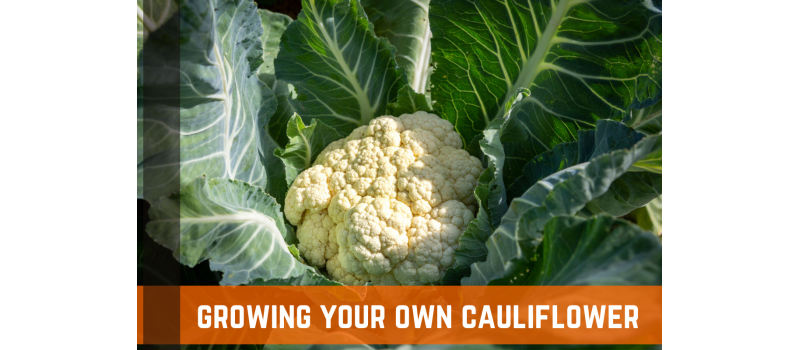Cauliflower tastes a lot like broccoli but has a very distinct nuttiness. The heads, which originate from immature flower buds, are the primary edible component of both broccoli and cauliflower.
Due to its extreme sensitivity to temperature changes, cauliflower is not the easiest vegetable to cultivate. It can, however, be a very profitable food for your garden with a little care. If you grow your cauliflower from seed, your variety selections will be much increased.
Blanching is required for all varieties of cauliflower, but it is especially important for white cauliflower. An antioxidant called anthocyanin gives the purple cultivars their color. Unfortunately, cooking makes both the color and the advantages disappear.
The thick, oval leaves of cauliflower have strong mid-ribs and veins. Cauliflower's stem and leaves can both be consumed. The curd-like immature flower buds that make up the cauliflower head are densely clustered together. The distinctive four petals arranged in the shape of a cross, which develop when the plant bolts, are the true flowers of the cauliflower.
Cauliflower plants prefer cool climates, and early spring or midsummer planting is optimum for an early summer yield. Depending on the variety, they have a somewhat modest growth rate and are available for harvesting two to three months after planting. Read on to learn all about how to grow cauliflower!
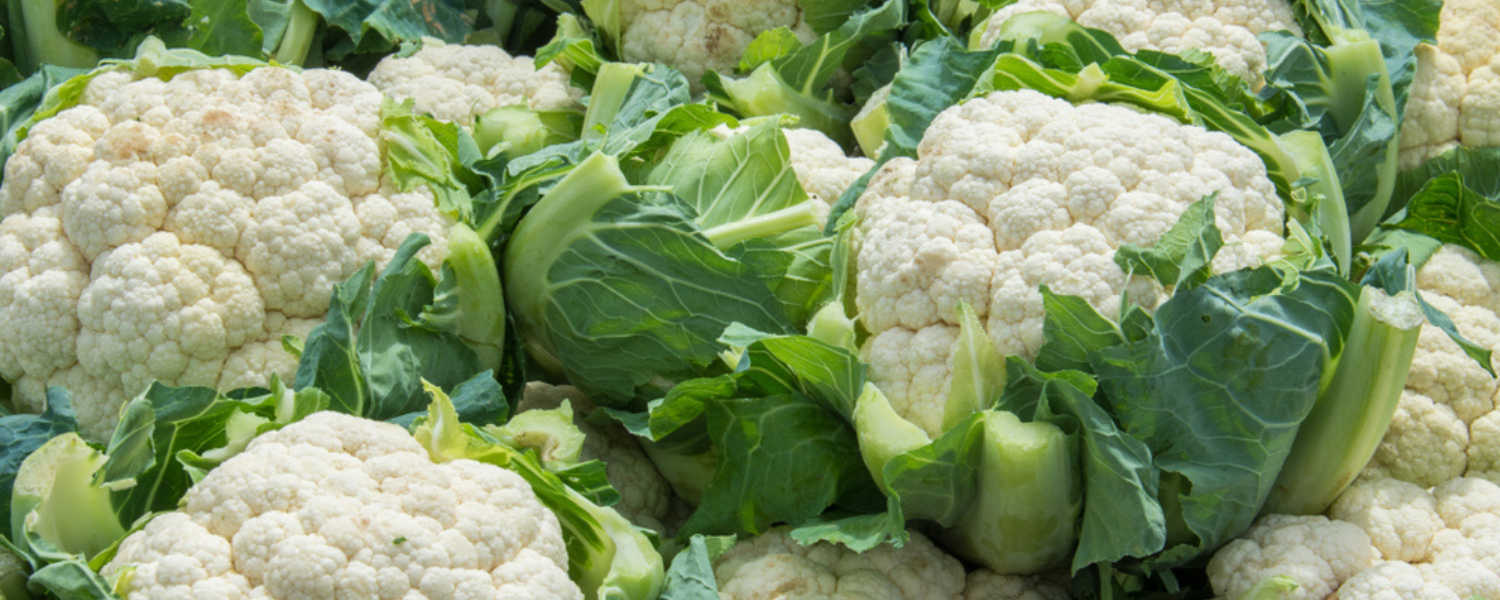
Cauliflower Growing Conditions
Light & Temperature
Cauliflower plants require full light, though in warmer regions a little midday shade helps prevent sunburn. While cauliflower prefers cool climates, it is vulnerable to frost.
It is normally planted in the spring or fall and picked before or after the hottest days of summer because it starts to suffer in temperatures exceeding 80 degrees Fahrenheit. When planting, mulch the plants to help the soil stay cool and retain moisture.
Soil
Cauliflower is a cool weather crop that requires well-draining, moisture-retentive soil with a pH between 6.0 and 7.0. If the soil is too sandy, you can add compost or other organic matter to help retain moisture. If the pH is too low, you can add lime to raise it to an acceptable level. By taking these steps, you can create an ideal environment for growing healthy cauliflower plants.
Water
Cauliflower requires a lot of constant moisture. The heads get bitter if there is not enough water. Make sure the water soaks 6 to 8 inches into the soil and gives plants at least 1 to 2 inches of water per week. In hot weather, leaving the soil dry will cause the buds to open somewhat, resulting in "ricey" heads as opposed to tight curds.
Nutrients & Fertilizer
Given how long it takes for cauliflower to mature, some more feeding will be required. Use an organic fertilizer, such as kelp or fish emulsion, to feed your plants every two to four weeks.
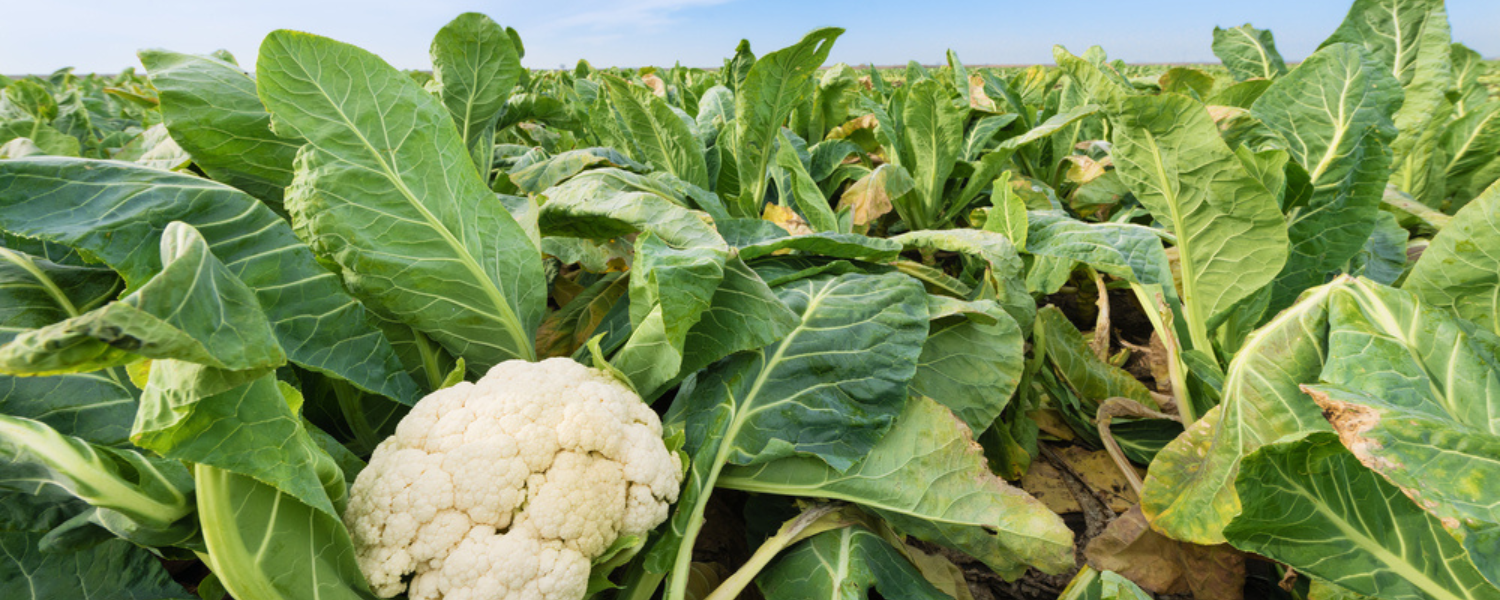
How To Plant & Grow Cauliflower
Cauliflower is a cool-weather crop that needs to be started indoors about six to eight weeks before the last frost date in your area. Follow these steps to plant and grow your own cauliflower:
- Choose a sunny spot in your garden that has well-drained soil. Cauliflower plants do not like to sit in wet soil, as this can lead to root rot.
- Amend the soil with compost or manure before planting, as this will help to provide nutrients for the plants.
- Sow the seeds in rows that are spaced about 18 inches apart. Once the seeds have germinated, thin the seedlings so that they are spaced about 12 inches apart.
- Water the plants regularly, as they will need about 1 inch of water per week. Be sure to water at the base of the plant so that the leaves do not get wet, as this can lead to fungal diseases.
- Apply a layer of mulch around the plants to help retain moisture and control weeds.
- Harvest the cauliflower heads when they are about 6-8 inches in diameter. Cut the heads from the plant, being sure to leave a few inches of stem attached
How Long Does Cauliflower Take To Grow?
Cauliflower is a cool weather crop that takes approximately 60 days to mature. It is a member of the Brassica family, which also includes broccoli, kale, and Brussels sprouts. Cauliflower prefers full sun and moist, well-drained soil.
Seeds can be started indoors 4-6 weeks before the last frost date or directly sown outdoors once the risk of frost has passed. When transplanting seedlings outdoors, take care not to damage the roots as this can set back growth.
Cauliflower heads are ready to harvest when they are 6-8 inches in diameter and the head feels firm when squeezed. outer leaves to protect the head from sunscald. Harvest in the morning for the best flavor and quality.
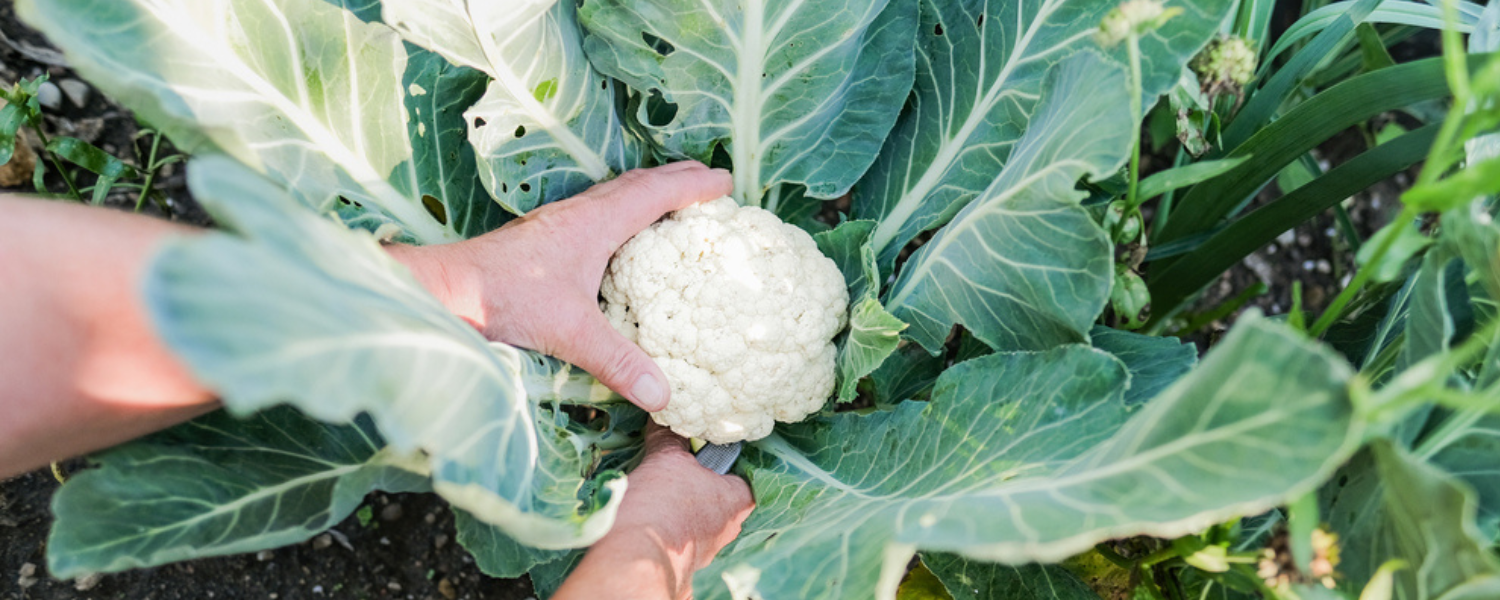
Harvesting & Storing Cauliflower
Cauliflower is a cool-weather crop that can be harvested from late summer through early fall. To harvest cauliflower, cut the head from the plant with a sharp knife when it is 6 to 8 inches in diameter. Be sure to leave 2 to 3 inches of stem attached to the head.
Once harvested, cauliflower can be stored in the refrigerator for up to 2 weeks. For best results, store cauliflower heads in an airtight container or plastic bag. Cauliflower can also be frozen for long-term storage. To freeze cauliflower, blanch the florets in boiling water for 3 minutes.
Then, transfer the florets to a bowl of ice water to stop the cooking process. Finally, drain the florets and place them in a freezer-safe bag or container. Frozen cauliflower will keep for up to 8 months.
Common Cauliflower Pests & Diseases
Pests
Cauliflower can be susceptible to a number of pests, including aphids, caterpillars, and whiteflies. While these pests can cause damage to the cauliflower itself, they can also spread disease and potentially contaminate the crop. In order to protect cauliflower plants from pests, it is important to practice good agricultural practices.
This includes using row covers to prevent insects from reaching the crop, as well as rototilling the soil to disrupt the life cycle of potential pests. By taking these precautions, farmers can help to ensure that their cauliflower crop remains healthy and free of pests.
Plant Disease
Cauliflower is susceptible to a number of different diseases. One of the most common is black rot, which is caused by a fungus called Xanthomonas campestris. The disease begins as small brown spots on the leaves, which eventually turn black and drop off. The stem and head of the cauliflower can also be affected, causing the plant to rot from the inside out.
To prevent black rot, it is important to rotate crops and avoid planting cauliflower in areas where the disease has been previously detected. In addition, infected plants should be removed and destroyed to prevent the spread of the disease.
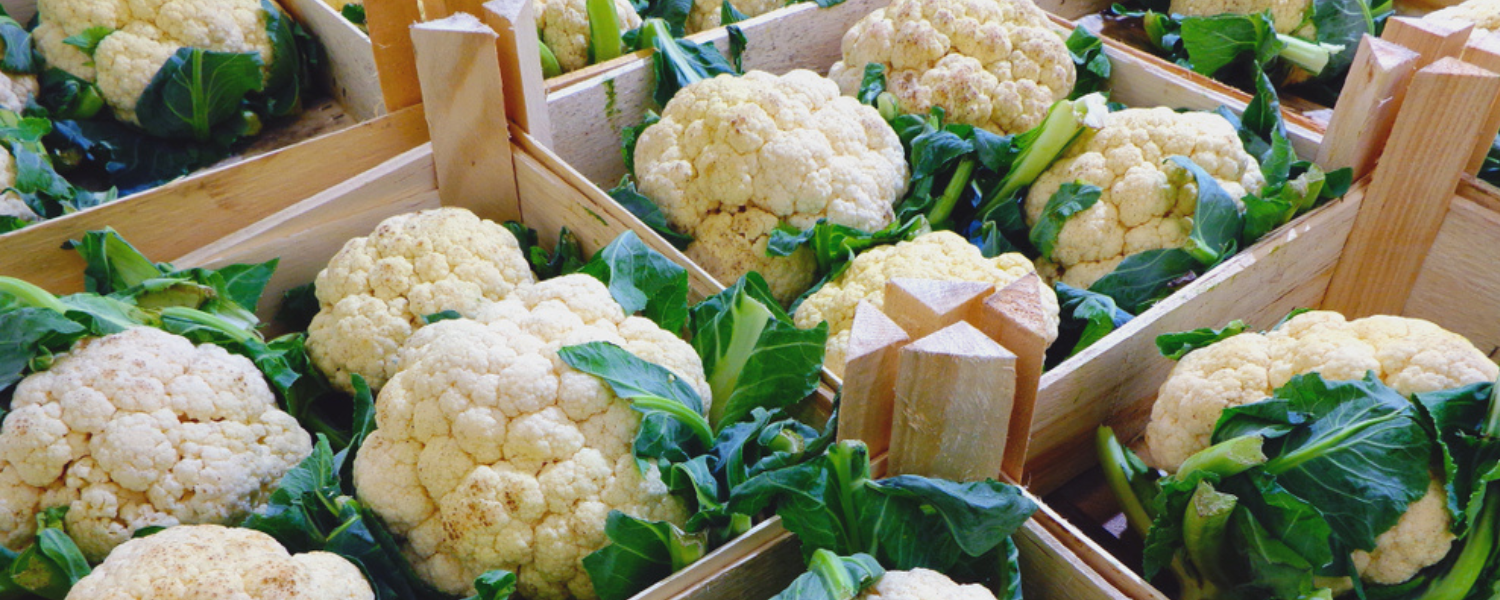
Review: How To Grow Cauliflower
Cauliflower is a cool-weather crop that should be planted in early spring or late summer/early fall. The plants prefer full sun but will tolerate some partial shade, especially in hot summer climates. Cauliflower does best in loose, well-drained soil with a pH of 6.0 to 7.0.
The plants require consistent moisture; too much or too little water can cause the heads to crack or develop off-flavors. Cauliflower is a heavy feeder and benefits from regular applications of fertilizer, especially when head development is beginning. For best results, use a high-nitrogen fertilizer and side-dress the plants every 4 to 6 weeks during the growing season.
Cauliflower heads are ready to harvest when they are 6 to 8 inches in diameter and still tight (not soft). To prevent the heads from turning brown, blanch them by tying the leaves together over the head about 2 weeks before harvest.
When harvesting, cut the entire plant just below the head. Store cauliflower in a cool, dark place; it will keep for up to 2 weeks. Follow our tips and you'll be growing your own cauliflower in no time!

